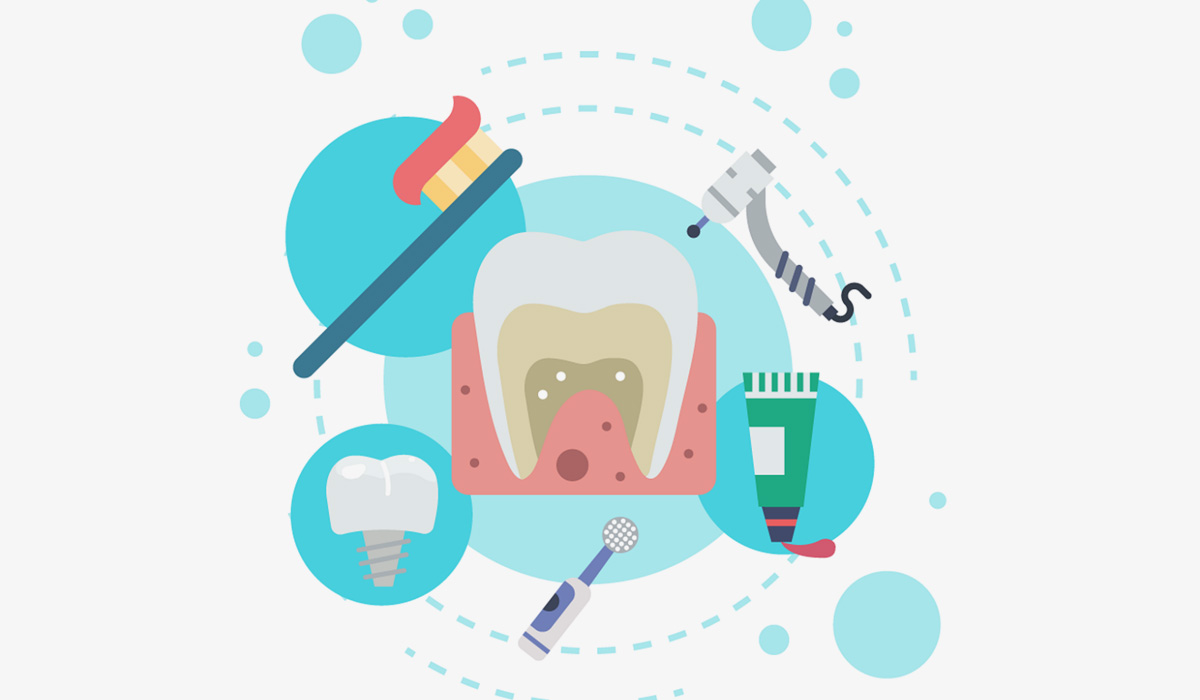We all know that a cavity is a bad spot in your tooth that you have to get filled, but they’re also a little more than that. A cavity isn’t just a sore spot – it’s an actual hole in your tooth that, if left untreated, can expand down to the roots of your teeth and the nerves housed there.
What Is a Cavity?
Tooth Anatomy
Before we can get further into the science of cavities, we must go over some basic tooth anatomy. Teeth are composed of three layers: the enamel (the hard part on the outside of the tooth), the dentin (a softer layer under the enamel), and the pulp (houses nerves and blood). The part of the tooth that sits above the gums is called the crown, and the part below the gums is the root.
Cavities typically form in the enamel layer and can progress into the dentin and eventually reach the pulp if left untreated. The cavity also does not form like a tunnel into the tooth – it usually expands and eats away large tissue areas.
Signs and Symptoms
Not all cavities are easy to see or detect, but these are the signs and symptoms to keep an eye out for:
- Increased tooth sensitivity to pressure and temperature
- Pain when eating, drinking, or constantly
- Craters in the tooth
- Bad breath
- Black or grey discoloration
- Pus
If you have these symptoms, you should see a dentist immediately. If caught early, most cavities can be fixed quickly and with little discomfort; if left to rot, they can cause serious health issues and require surgery.
What Causes Cavities?
Everyone knows poor oral hygiene and a high-sugar diet can cause cavities, but how does this happen? Well, cavities occur when a chemical process called demineralization weakens the tooth enamel. As the name suggests, this is when the enamel loses its minerals in the environment, thus causing it to weaken.
Demineralization is caused when the tooth is exposed to an acid environment – no, this doesn’t mean you can’t enjoy your favourite citrus fruits – “acid” here refers to a pH of 5.5 or lower. And where do these acids come from? You’d be surprised. They don’t come directly from your food but from the bacteria in your mouth.
Bacterial Build Up
The idea that there are cavity-causing bacteria in your mouth could be more appealing. But there are millions of resident bacteria that live naturally in your body. These bacteria are supposed to be there because they keep you healthy. The same thing goes for your mouth.
The catch is that the bacteria in your mouth that are helpful in small numbers can also cause damage if the population grows too large. They live off of the sugars from the foods you eat, and they secrete acids as they grow – the acids that cause demineralization. That is why eating a lot of sugary goods can contribute to forming cavities.
Regular brushing and flossing remove lingering sugars and help keep bacterial populations in check.
Where Does Plaque Come In?
No matter how meticulous you are in your oral hygiene habits, you must visit a dentist regularly to have them remove stuck plaque in hard-to-reach places.
Why?
Plaque is an accumulation of bacteria, sugars, and damaging acids. It contains everything the bacteria need to flourish – and keeps them right up against the surface of your teeth.
You remove some of this plaque when you brush, floss, and rinse, but you can’t remove it all. The plaque you catch will harden over time, making protecting the bacteria more challenging to remove. Most dentists recommend coming in to have this cleaned every six months or at least once a year.
Science Meets Cavity Prevention
We’ve learned about how cavities form and what causes them, so now it’s time to talk about how to prevent them from happening in the first place. You have probably heard your dentist tell you the importance of regular oral hygiene, but here is what it does and why it is crucial:
-Brushing: you should brush your teeth twice a day at a minimum, but you can certainly do more than that. If cavities are a big worry for you – or if you currently have some – you might consider brushing after each meal.
Also, don’t just brush your teeth. You should also brush your tongue, gums, and cheeks. Plenty of bacteria lurking in those places, but care when brushing your gums – you don’t want to cause bleeding.
-Flossing: Dentists often harp on flossing, but only some of us do it as regularly as we should, to our detriment. Tiny food particles can get stuck between your teeth while you eat, allowing bacteria to build up and form hard plaque.
Flossing removes food and plaque, which can cut down on cavity formation in the hard-to-reach places between your teeth.
-Rinsing: The last key component of proper oral hygiene is rinsing with a fluoride mouthwash. You’ll want to swirl a mouthful for at least a minute, knocking out any acids and bacteria left after brushing and flossing.
You mustn’t use just any old mouthwash. You want to use fluoride only if it has fluoride. Fluoride is one of the most effective ways to protect your teeth from demineralization and decay. It kills bacteria, prevents cavities and oral diseases, and helps freshen your breath. Contact our NW Calgary dental clinic today.

